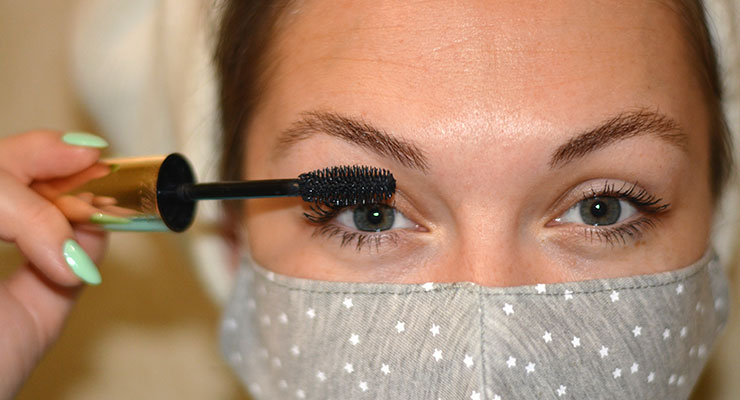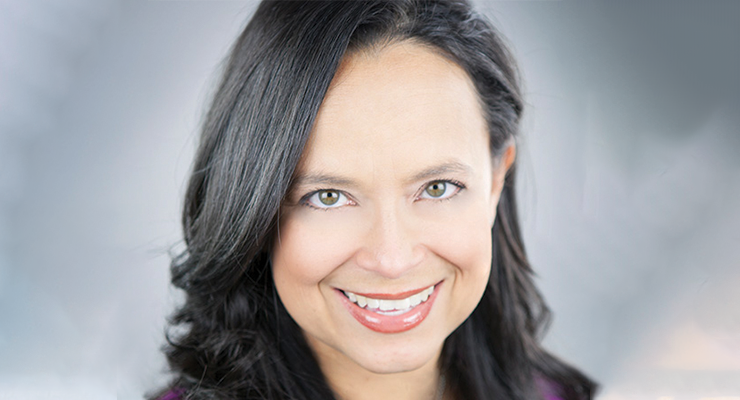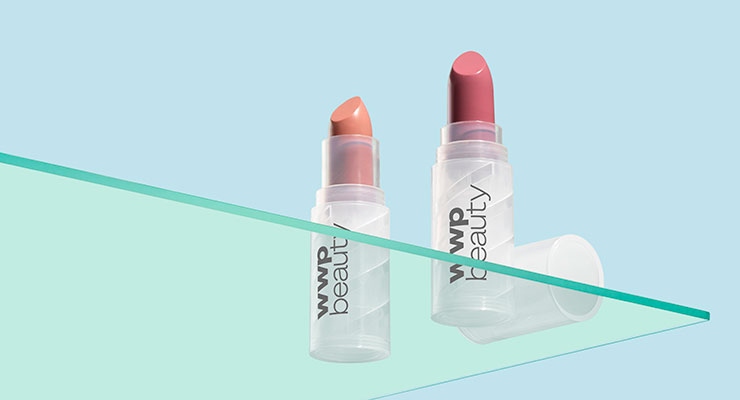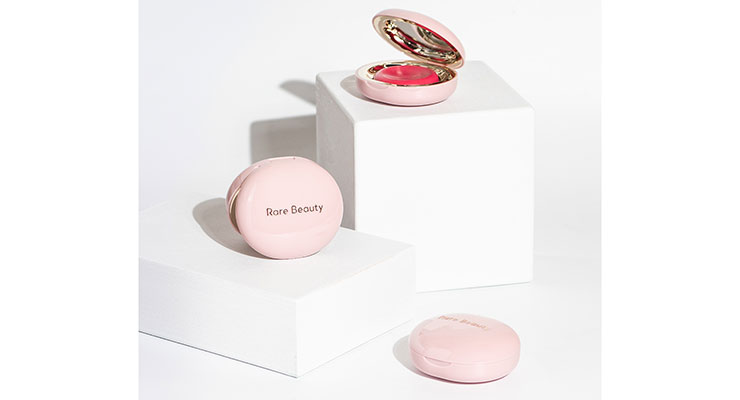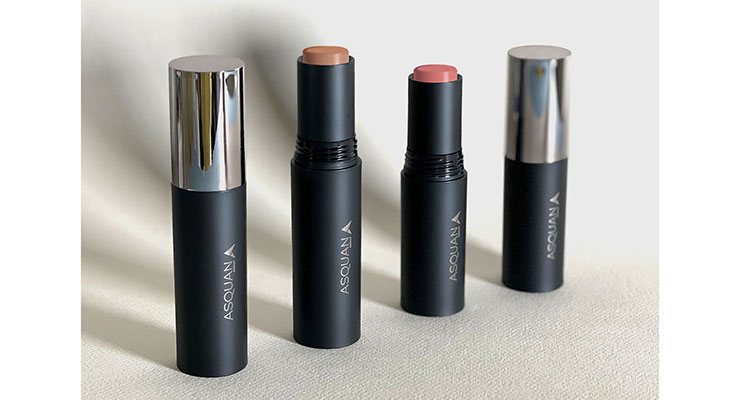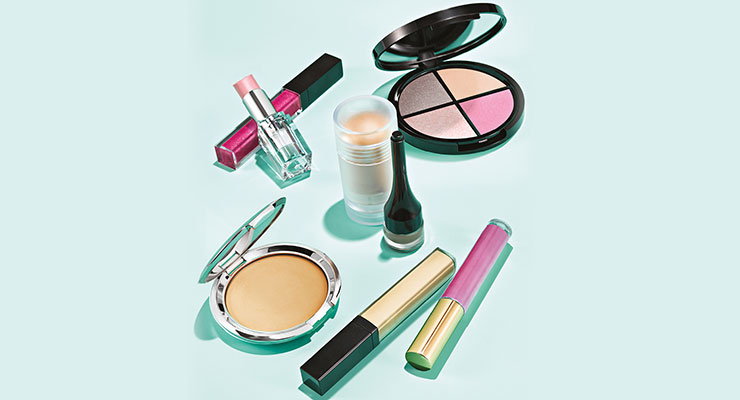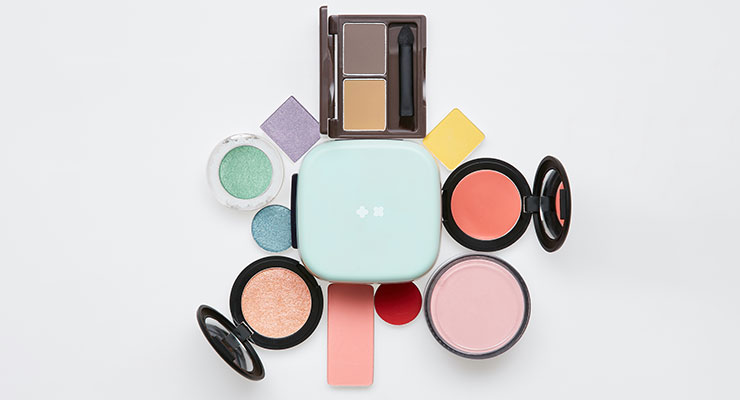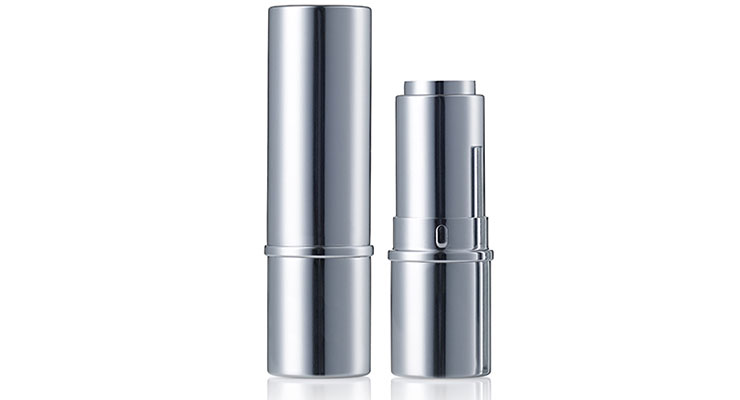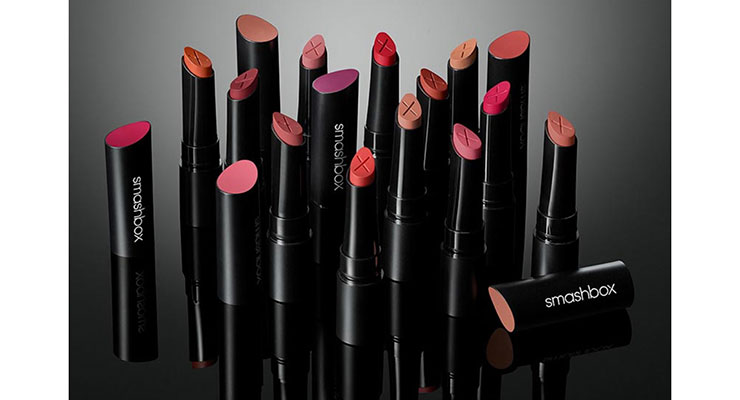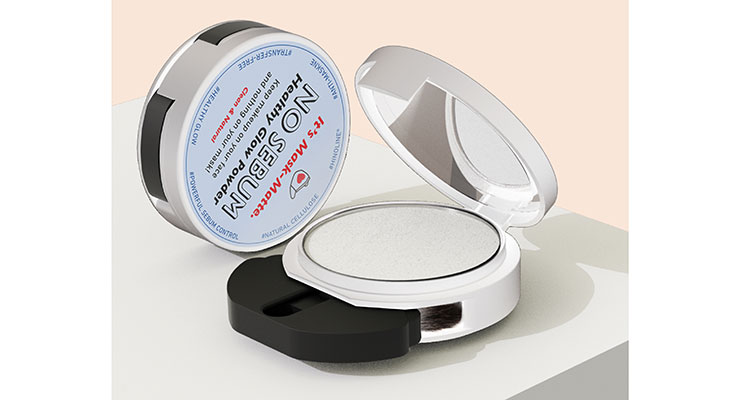Jamie Matusow, Editor-in-Chief03.01.21
New data from The NPD Group shows that “despite the tight race between makeup and skin care throughout the year, makeup ultimately maintained its position as the largest beauty category based on dollar sales for 2020; however, it was also the most negatively impacted by the pandemic.”
While sales of face and body products, hair care and nails blossomed during lockdown, work-from-home routines, mask wearing and the shuttering of brick-and-mortar retail did little to energize interest in items from lipstick to cheek color. One of the bright spots was eye makeup, which stood out in lower-face-covered selfies, and emphasized full brows, deeply hued lids and lush lashes.
Larissa Jensen, vice president, beauty industry advisor, The NPD Group—and a member of Beauty Packaging’s board of advisors—says, “The pandemic hit the makeup category especially hard this past year. With a consumer that was primarily homebound, makeup found itself not only with the poorest performance of any beauty category, it also was the most stagnant over the course of the year. Skin care, fragrance and hair saw improvement in sales month after month from May through the end of the year, but makeup remained in the -30% range for much of that time.”
Further, Jensen says all categories in Color declined in 2020, with the exception of nail care products, which posted growth. Lip products fared the worst, according to Jensen, and eye makeup captured more dollar share as a result. “This was in line with the need to wear protective face masks in public, where little else is seen on the face besides the eye area,” she explains.
Still, despite the category’s many challenges throughout the year, Color Cosmetics brands and packaging suppliers rallied, showing flexibility and agility. They responded to the skyrocketing transition to online beauty sales. They created products that matched pandemic-related trends that encompassed not only mask wearing, but hygienic practices and, of course, a growing interest in sustainable solutions in everything from locally sourced ingredients to refillable packaging.
Color Versus Skin Care
Suppliers that we spoke with for this article have identified current trends, and say that demand in certain Color Cosmetics categories has remained vibrant—or played off the successful skin care market.
At WWP Beauty, Josh Kirschbaum, chief executive officer, tells Beauty Packaging, “The key trends that we are observing in the Color Cosmetics packaging space include a continued focus on sustainability, a shift toward skin care, including traditional skin care packaging being used for color (droppers/serums/airless pumps), and the need to stand out in the digital space more than ever before. For many brands, catching the consumers’ attention online is key to their success, and the packaging is truly the first impression to that interaction.”
Kirschbaum believes the pandemic has boosted the makeup market in some ways, saying, “Color Cosmetics has remained strong even during the pandemic. People are using their makeup to express themselves and have more time to try new looks and perfect their artistry skills.” He explains that, overall, WWP really only saw a slight dip in Color Cosmetic sales at the beginning of the pandemic, but many brands were quick to recover by adapting and evolving their products and marketing to meet the needs of their consumers quickly. “As a supplier,” Kirschbaum says, “we also had to quickly evolve and adapt our offering and services to give brands more options that included the addition of a PPE line, added skin care packaging options, and more sustainable innovations.”
During Covid, Ariel Kuzon, marketing director, HCT Group, has seen brands that traditionally provided only color cosmetics, want to create their own skin care products to meet consumer demand.
Cheryl Bisset, senior vice president of sales, HCP USA, also notes how skin care has affected the Color category. “The skin care boom we’ve seen throughout the pandemic has resulted in a more aggressive approach, shifting our focus internally in regard to stock line additions and expansion of our global manufacturing capabilities within this arena. There is a significant market spike that can be seen; this is not only pertaining to classic jars and bottles but also inclusive of color lines which encompass nourishing formulas.”
Complexion has remained strong for FusionPKG, throughout the pandemic and continues to grow, according to Sarah Heath, vice president of marketing. She says, “From a formula standpoint, we are seeing a much bigger drive toward a more natural finish than the pre-Covid full coverage look.”
In 2020, FusionPKG designed and developed the color cosmetic package for Rare Beauty Stay Vulnerable Melting Blush.
Alexander Kwapis, Fusion’s vice president of product design & development, describes the package: “At first glance, you notice its ever-so-subtle pebble shape comprised of two circles coming together when viewed from above, offering it a simple shape that is both delicate and ownable. Once you open it, you realize the Stay Vulnerable Melting Blush has a lot going on in the inside. You immediately notice the height of the formula and how the package has been designed to elegantly make room for it. The metallized inner piece around the mirror and the formula refract in ways that surprise and delight the user.”
Heath also says they are seeing “a real drive toward hygiene.” She explains, “Not surprisingly, brands are looking for limited, to no-hand contact for application.” Multi-sticks and sprayers have been very strong during the pandemic and continue to pick up more speed, she says.
DK Tché, CEO & creative director of PURPLEPATCH, which is SamHwa’s turnkey division in Seoul, also views hygiene and limited-contact application as key trends emerging from the virus. He tells Beauty Packaging, “The most significant influence of Covid-19 on the color cosmetics market is ‘untact.’ ” One of the high-trending buzzwords in Korea these days, Tché explains, “untact” is a new term coined by combining English language elements; the prefix “un” which expresses the opposite state of an adjective that it precedes and “tact” borrowed from the word “contact.”
Lips Down, Eyes Up
As NPD’s Jensen outlined previously, most in the industry have found the Lip category to have taken the greatest hit in usage and sales, while Eye products have held their own.
WWP Beauty’s Kirschbaum concurs, saying, “In color cosmetics, it is all about the eyes right now and we predict that this trend will stick around for some time as it is likely that the use of facial coverings and masks will continue to be used in public settings far past 2021. Within the eye category, specifically, we have seen an increase in requests for mascaras with lash strengthening and lengthening products, as well as eyeshadows and brow products.”
In a situation like no other, Andrea T. Stelluto-Pinto, SVP sales, NA, Asquan, says, “The greatest impact has been on the lip category. It has taken a big hit with the need for everyone to wear a mask.” She recounts that Leonard Lauder coined the term “the lipstick index” years ago—essentially stating that even during a recession, lipstick sales still do remarkably well. “Unfortunately,” says Stelluto-Pinto, Covid has shown that ‘the lipstick index’ does not hold true during a pandemic where mask wearing is mandatory. Of course, as soon as life returns to normal, the market will rise.”
Stelluto-Pinto agrees that the color category that still shows growth is any packaging for eye products—brow packaging, eye shadow packaging, mascara, eye liners, etc., and for the face (stick foundation). “However,” she says, “from an industry perspective, skin care, hair care, lip care, and body continue to be huge categories in beauty.”
Covid-19 and masks have pushed the eye category into the spotlight, says Vonda Simon, co-founder, SeaCliff Beauty. She says, “We are getting more requests for lash growth serums and mascaras to give a natural and minimal look.” Simon adds, “Face and lip haven’t been as active as in normal years.”
Eyes and brows are a growing category at CTK, where Jackie Paterno, vice president, says, “Our slim brow pencils are water, sweat and smudge-resistant. Our ultra-thin retractable lead tip enables precise hair-like strokes, achieving a natural finish. There is also a refillable option that is quick and easy to remove and assemble.”
HCP’s John Kurek, VP global mascara product marketing, explains, “As eyes inevitably took center stage during 2020, and will continue to do so into 2021, we have also seen more requests for eyeliner projects—tapping into the trend for expressive eye makeup. A particular trend for mascara has been the rise of ultra-slim packaging and fiber applicators; offering excellent dexterity and controlled application, reaching even the tiniest lashes or suitable for creating fun looks such as colored or ombre lashes.” (HCP has also developed a number of innovative products for lip color, which you can read about in the Sustainable Packaging and Refillable sections further on in this article.)
While Tché of SamHwa’s PURPLEPATCH agrees that eye makeup products have grown throughout the year, due to masks exposing only the eye area, he believes this is only a short-term marketing effect. He says, “If the mask is removed even once, a woman will feel embarrassed about her face where the makeup balance doesn’t fit, so she will avoid putting makeup with only the eye line dark on the face without other cosmetics. The base product that finds a solution to symbiosis with the mask will grow the most.”
Sustainability Leads the Trends
At HCT, Kuzon affirms, “Sustainability is not a trend, it’s the future.”
But it may be a somewhat complicated and difficult future to meet in Color Cosmetics.
“It’s a tall order to stand out on shelf and on a scroll while also being refillable, recyclable, eco-friendly and/or reusable, but it will be increasingly important,” says NPD’s Jensen, adding: “Recovery [in Color] will happen but it will take time.”
Not surprisingly, many of the suppliers we spoke with for this article are taking on the sustainability challenges for color cosmetics packaging—from brows to lips, foundation to shadows. Quick-to-market, turnkey and hygienic also top the list of priorities.
The surge in interest for sustainable components has become a key packaging design directive.
Robert Bulla, director of engineering & innovation, at APC Packaging, says, “We are starting to see more interest in designing for sustainability in an arena that typically has been avoided by brands and manufacturers due to the fact that multi-material packages are very much the norm.”
HCT’s Kuzon says: “Eco packaging is obviously top of mind for all of our clients. We are creating solutions that fit their sustainability needs as well as helping them remain true to the brand’s identity.”
Cosmetic packaging can be difficult to recycle due to its decoration and structure’s complexity to keep formula longer, says SamHwa’s Tché. Therefore, he says, “As the packaging manufacturer, setting a development plan for a balance in sustainability with functionality is challenging.” He explains that many brands have specific sustainable claim requirements in the market, with five-to-10-year goals being an international movement.
Based on SamHwa’s “long-standing experience in airless and airtight systems since 1994,” Tché says the company aims to maximize sustainability in packaging by reducing plastic parts, such as in their airtight compacts, in which they substitute plastic parts with alternative sustainable materials like glass, paper and aluminum.
Stelluto-Pinto, at Asquan, says, “The dominating trend has been around sustainability, in all forms, for color cosmetics. “Our customers are looking for any eco option such as PCR, mono-material, refillable, biodegradable, compostable and to lower the amount of plastic used. Also, due to the difficulty of the biomaterials, they are paying more attention to mono-material and/or PCR/PIR material.”
Anton Meindl, strategic sales director, ESKA USA, also makes note of the rise of sustainable solutions. “The trends we’re seeing are changeovers to more sustainable and recyclable packaging like paper compacts, versus the standard plastic compacts.”
Meindl says, “The ESKA brand has been a leader in sustainability. Our facilities use the lowest concentration of water, energy, and produce zero rejects in the manufacturing process as all rejects go to our waste to energy plant to assist in powering our factories.”
In the coming months, ESKA will launch a new sustainable package which Meindl says has gained the name “naked” palette. While still in the process of initial launch to market for the palette that’s manufactured from ESKA’s solid rigid board, Meindl explains, “We are also in the process of setting up U.S. manufacturing to better serve the NA market, and bring speed to market on this innovation. He says samples are available now for any brands looking for an 85-90% sustainable cosmetic package.
The benefit, explains Meindl, is that the palette doesn’t need to be wrapped with a paper cover. “So you can manufacture the palette in one of our many ESKA Colors, and then hot stamp, emboss, deboss, directly on the compact itself.” The board color could also be customized for each customer based on their corporate color scheme, or seasonal launch. In addition, says Meindl, “Not using a paper wrap around the compact itself saves on development costs, and also helps the environment long-term once it’s disposed of.”
HCP has increasingly produced a vast variety of sustainable packaging, and development keeps evolving to accommodate market needs. Kurek says, “As sustainability permeates every aspect of the industry, we are meeting more requests for bio-based fiber brushes.” HCP can support bio-based fiber from multiple supply sources including fiber mascara brushes made from castor oil (100% bio-based), EcoWood or PLA. He says their Lash Studios “are rigorously testing these applicators and have found that performance parameters and technical specifications of the bio-based fibers are comparable to typical nylon fibers.”
Refillables, Resistance and Mono-Materials
A demand for more sustainable packaging solutions has put growing emphasis on refillables, but the path to retail appears complicated.
At SamHwa, Tché tells Beauty Packaging, “The hottest trend in color cosmetics is discovering the right answer to sustainability. From the perspective of the 3R movement, which is an eco-friendly world view of Reduce, Reuse, Recycle, it is now necessary to look at the trend from the packaging point of view of 4R with the added Refill.
He adds, “As high demand for travel is expected once Covid-19 decreases, the on-the-go trend should also be noted.” SamHwa recently produced a new Beauty Pouch for the on-the-go trend. “You can combine your cosmetics compactly, explains Tché, and you only need to replace the used parts, so it touches the environmentally friendly issue.”
The challenge, says Tché, is for consumers to adapt to the new product’s modular form.”
At WWP Beauty, Kirschbaum says, “The journey to offering a more sustainable packaging story differs from brand to brand. Beauty brands really have to make their choices in sustainability based on their specific consumer and what sustainable attributes that consumer finds valuable.”
He explains, “WWP Beauty likes to give brands many different paths to a sustainability story so that they have more options when making this decision. While refillable and keepsake packaging is of interest among many brands, educating the end user on the refill system can sometimes pose challenges. WWP Beauty recently released a refillable series of products including a Refillable Body Stick, Refillable Cheek Stick and a Refillable Bottle that offer simplified refill systems which make it easy for the brands to educate their users on how it works.”
HCP has made numerous sustainable advances in refillable and mono-material packaging for lips. Bisset tells Beauty Packaging, “Brands are increasingly asking for lipstick packaging to be refillable and we see this trend picking up tremendous speed. We are seeing that lipsticks will become ‘trophy’ products to cherish, with high-end and elaborate designs that can be kept and refilled for life, like an heirloom.”
Refill and streamlined, mono-material packaging that is more easily recycled is a top trend across all categories, says Bisset. HCP’s latest launches include two mono-material lipsticks: one in “all chic” aluminum and a second in PP, which is also refillable and lightweight with strong mechanical resistance, and “economic to manufacture.” Bisset adds, “For brands investing in custom pack designs, these mechanisms can also be used with specially designed fashion parts to create a completely new, eye-catching launch.”
HCP now offers two new lipstick eco-solutions—Harmony and Harmony Luxe.
The Harmony lipstick is a mono-material design featuring a cap, base and mechanism all made with PP, with a refillable mechanism. This new item can be supplied in certified PCR PP for a lower environmental impact, while retaining the quality and functionality of the pack. The Harmony Luxe lipstick is manufactured with an aluminum mono-material design; lightweight and created using a single material, with strong mechanical resistance (not a refill).
“Sustainable packaging has become a requirement for many of the brands we work with as well as the beauty retailers like Ulta Beauty,” says Simon at SeaCliff Beauty. She says, “Refillable packaging solutions are typically part of that discussion, but we haven’t seen a huge surge yet. I think it’s because refills require a brand to think differently about marketing, pricing and logistics. For many it’s a shift in business strategy.”
At Asquan, Stelluto-Pinto, says, “Every one of my brands requests that the packaging we offer have a sustainable position whether it be the use of PCR, recyclability, or refillable options.” With regard to refillable and reusables specifically, she says, “It is certainly being considered more. However, we are not seeing as much of this, as it presents specific complications for brands such as how they will manage inventory, will the refillable cannibalize the primary package, etc.”
The real challenge for refillables, says Stelluto-Pinto, is how to market it and how to display it on the retail side—as “a consumer behavioral change is needed in order for this to truly work.” She adds: “A brand with a very big audience will need to help push this so it can become mainstream and can actually make a positive impact on the environment.”
In the end, says SamHwa’s Tché, the answer to sustainability will be biodegradable, not refillable or reusable. “It’s not easily accessible nowadays due to high cost and technical limitations, but those who find an effective biodegradable solution within a short period of five years will be the winner in the cosmetic industry.”
Turnkey Proves Effective
SeaCliff Beauty’s Simon attests to the fact that turnkey is playing a role in jumpstarting activity in color cosmetics. She says, “We’re seeing a lot of growth in turnkey. Smaller brands are using it as a way to get into the market and the larger brands can use it to get to market faster. We’re starting to see more activity recently with brands expecting to launch new products by the end of 2021.”
Simon says SeaCliff is currently working on a full turnkey project for a refillable mascara. “We’ve engineered a custom refillable mascara package along with a clean formula that will launch in the coming months.” While she says they’ve developed several different refill ideas with palettes, jars, pumps, etc., this is their first time engineering a refillable mascara pack. Simon says there were several challenges including cap orientation, developing a strong durable outer, a cost-effective inner bottle and an intuitive design that makes it easy for the customer to manage.
CTK’s Paterno explains that for innovation, multifunction packs such as their Brush Pop Compact (see sidebar on p. 154), turnkey development is key to success.
“This is the perfect example of how turnkey impacts color cosmetics, coming up with solutions for one of the most common and annoying issues related to mask wearing and pairing it with a hygienic package.”
She adds, “When you have an innovative product, you want an innovative pack. Turnkey allows the product to be developed in the ideal package, taking application into consideration.”
Interest in turnkey is also growing as regionalization becomes more important, according to HCT’s Kuzon. She says, “HCT can produce scaled end-to-end turnkey projects in Italy. This is something we are working on more and more with clients.”
“Turnkey development has really made it easy for brands to get new products to market more quickly so that they can stay competitive in the crowded color space,” says WWP Beauty’s Kirschbaum. “At WWP Beauty we offer a full-service approach that really focuses on our customers’ needs and our ability to help them across every category of beauty including color, skin, hair, nail, PPE, fragrance, bath and body.”
Looking to 2021 and Beyond
With 2021 still unpredictable as far as Covid-19 and its ramifications on the Beauty industry—in particular, on Color Cosmetics—we asked some of our experts what they predict based on their insider knowledge.
“It’s difficult to predict where we will be by the end of 2021,” says HCP’s Bisset. “However, if some semblance of normal life returns, we anticipate consumers enthusiastically embracing fun beauty looks that bring joy and self-expression—particularly colorful eyes and bold lips.”
NPD’s Jensen, believes, “When consumers return to the workplace in major cities, when tourism rises, and when spend returns to experiences, we should see a slow return to spending in the makeup category. Once these things happen, there will be a need once again for makeup. Recovery will happen, but it will take time.”
Asquan’s Stelluto-Pinto says most of the brands she works with want to be ready for September… thinking that Covid-19 will be resolved. “We are confident about the effect of the vaccines, and predict the situation will improve during the second quarter.”
Others feel it may be 2022 before we return to a semblance of our old notions of normalcy.
At APC Packaging, Bulla, says they feel that 2021 will be a transition year, and do not see the market coming back to full normality till 2022.
“I’m hopeful that consumers will want to get out of their sweats and get dressed up again once the pandemic starts to subside,” says SeaCliff’s Simon. “I also believe that by 2022, consumers will start to realize the cosmetics that have been sitting in their drawers are old or expired. Time to restock!”
Still, others view the time beyond Covid as a new normal, a new era, in fact. Tché, at Samhwa, says, “Many current futurists who have stated the example of the plague that terminated the 14th-Century medieval period, say that Covid-19 will end the modern era and be a new door to open the ‘ultra-modern’ era.” He adds: “I accept this as a new aspect of change that will change the trends of the times, and not dismiss it as a short-term event to be resolved within this year.”
As masks inhibited the usage of lip products, an emphasis on eye products tipped the scale disproportionately upwards.
Still, some brands have created innovative solutions for the lip sector, making products more tolerant of coverings.
For instance, Smashbox developed its Always On Cream to Matte Lipstick. Jill Tomandl, vice president, global product development and innovation at Smashbox, says,
“Smashbox listened to consumers. We took all the high performance, beloved benefits of liquid lipstick and solved the pain points to create this product.” Saturated color is “Always On” your lips with this vegan, cruelty free, long-wearing formula. “You can feel confident the lipstick won’t move when you take off your mask, since it is transfer resistant,” explains Tomandl.
FusionPKG’s Sarah Heath says they are seeing development pick up for their turnkey color customers—and for products that take masks into account. “We have stayed strong in our complexion products during the pandemic, but are now seeing excitement around setting sprays—to keep makeup on point underneath masks—multi-pigments, eye shadow palettes, lipstick and, of course, everything eyes.”
Beauty industry supplier CTK Cosmetics also launched a mask-proof product and package—with a hygienic application to boot. Jackie Paterno, vice president, CTK, tells Beauty Packaging, “We recently developed a great Setting Pressed Powder that is mask-proof. Our matte, velvet finish powder is to be used under your mask so makeup does not transfer onto your mask. We wanted to get the right pack for this formula; something that not only houses the product, but has a face brush built in for easy and hygienic application. Our Brush Pop Compact was perfect for this formulation—a compact with individual brush space and a sizable synthetic face brush built in.
E-Commerce Trends Put the Onus on Getting Packaging Right: here
Growth Ahead for Some Categories in U.S. Prestige Beauty: here
And see the slideshow: Here’s What’s New in Color Cosmetics: A look at 7 recent launches that caught our eye—and our lips.

